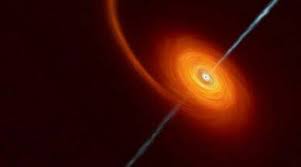More than halfway across the known universe, astronomers have observed an act of tremendous violence as a black hole rips apart a star that got too close to this celestial savage. But this was not your typical case of a hungry black hole.
It was one of only four examples – and the first since 2011 – of a black hole observed in the act of tearing apart a passing star in what is called a tidal disruption event and then launching luminous jets of high-energy particles in opposite directions into space, researchers said. And it was the most distant and brilliant such event ever observed.
A supermassive black hole estimated to be hundreds of millions of times as large as our sun and located about 8.5 billion light years from Earth looks to be the culprit. 5.9 trillion miles is the distance that light travels in a year, or a light year (9.5 trillion km).
According to University of Minnesota astronomer and study co-author Michael Coughlin, “when a star dangerously approaches a black hole – no worries, this will not happen to the sun – it is violently ripped apart by the black hole’s gravitational tidal forces – similar to how the moon pulls tides on Earth but with greater strength.” (Watch the tidal disruption event animation.)
Much like the Milky Way and most galaxies, the supermassive black hole is thought to be located at the centre of a galaxy. However, the tidal disruption event was so intense that it blocked out the stars of the galaxy.





